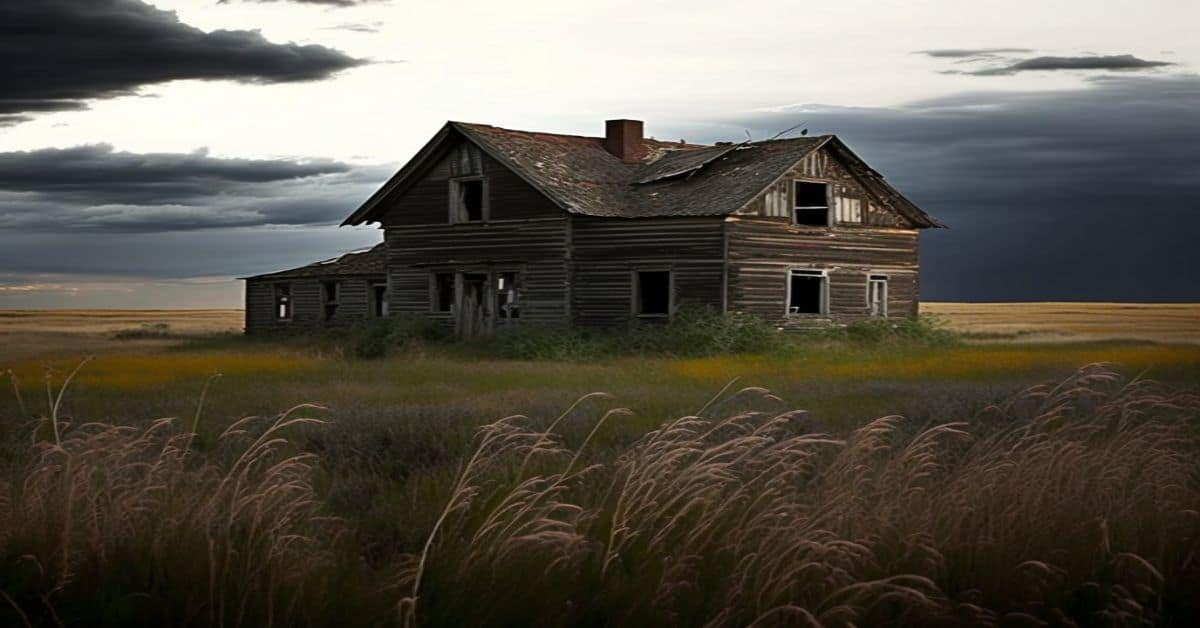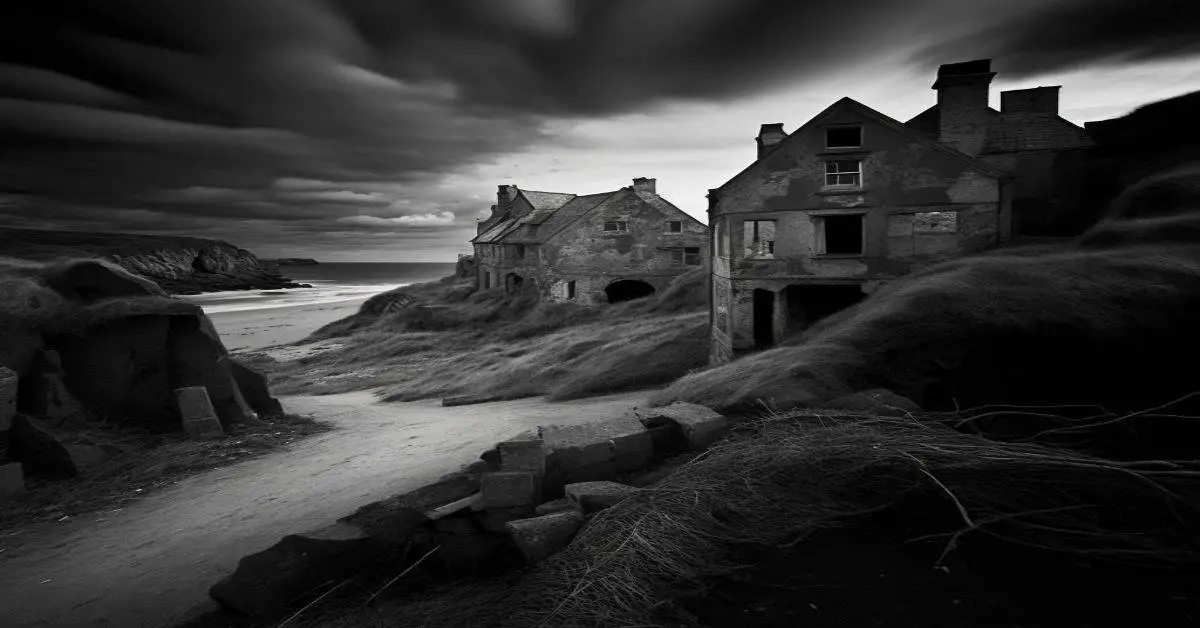In Okfuskee County, Micawber, Oklahoma was once a bustling town with early settlers such as the Whetstones, Smalleys, and Mayfields. However, the town’s fate was sealed during the 1930s when it disappeared, likely due to poor farmland that did not support homesteaders.
Today, all that remains of Micawber is a deeply rutted red-clay road leading to the Micawber Cemetery, where several early residents are buried. This ghost town, also known as Creek Twp #2, is now lost to time, but its history and legacy continue to live on through the memories of those who once called Micawber home.
In this article, we will delve into the history of Micawber, from its location and climate to its disappearance and current state. Through thoroughly examining the town’s past, we hope to shed light on the factors that led to its abandonment and the remnants that still exist today.
Despite its disappearance, Micawber’s legacy remains alive, and we aim to explore the town’s history and significance in the context of the broader American frontier experience. So join us as we embark on a journey to uncover the story of Micawber, Oklahoma, a ghost town lost to time.
Key Takeaways
- Micawber was once a bustling town in Okfuskee County, but it disappeared during the 1930s, likely due to poor farmland that did not support homesteaders.
- The disappearance of Micawber had a significant impact on the local community, and it serves as a reminder of the difficulties faced by early homesteaders in Oklahoma.
- Today, all that remains of Micawber is a deeply rutted red-clay road leading to the Micawber Cemetery, the only tourist attraction in the town and the final resting place of several early residents.
- The preservation efforts have been ongoing, with volunteers clearing the overgrown vegetation and repairing the headstones, ensuring that the memory of Micawber will not be lost to time.
Location and Climate
Based on the pre-existing knowledge, Micawber is an abandoned ghost town in Okfuskee County with a hot climate in the summer. The best time to visit is during non-rainy periods due to the red clay dirt roads leading to the Micawber Cemetery, the only tourist attraction in the town. The newly renovated cemetery is the only reminder of the town that disappeared during the 1930s.
As Micawber, Oklahoma is a ghost town lost to time, there are no local activities or businesses. The only local activity is visiting the Micawber Cemetery, accessible through a deeply rutted red-clay road. Despite the lack of activities, the town’s history and the cemetery burial sites attract visitors interested in exploring the town’s past.
The town’s poor farmland did not support the homesteaders, resulting in its disappearance.
History and Disappearance
The historical records indicate that the town of Micawber ceased to exist during the 1930s, leaving behind only a deeply rutted red-clay road leading to Micawber Cemetery.
The town’s disappearance was likely due to the poor quality of farmland, which could not support the homesteaders.
As a result, many early residents, including the Whetstones, Smalleys, Smiths, Jeffers, Thorsons, and Mayfields, were forced to leave the area to seek better opportunities elsewhere.
Micawber’s disappearance significantly impacted the local community, as it left behind only the Micawber Cemetery and newer farm houses that are currently occupied.
The town’s disappearance also meant that many families were separated, and their way of life was forever changed.
Today, Micawber, Oklahoma serves as a reminder of the difficulties early homesteaders face in Oklahoma and the importance of sustainability in rural communities.
Current State and Remains
Currently, the remains of Micawber consist solely of a deeply rutted red-clay road leading to the Micawber Cemetery and newer farm houses that are presently occupied. The town disappeared during the 1930s due to poor farmland that did not support the homesteaders. There are no buildings or structures left in Micawber, and the only reminder of its existence is the cemetery.
The Micawber Cemetery is the final resting place of several early residents, including the Whetstones, Smalleys, Smiths, Jeffers, Thorsons, and Mayfields. The graves are abandoned, and there have been efforts to preserve the cemetery.
The newly renovated Micawber Cemetery is a significant part of the town’s history and reminds of the early homesteaders who once lived there. The cemetery is located at the end of the red-clay road, and visitors can still access it. The preservation efforts have been ongoing, with volunteers clearing the overgrown vegetation and repairing the headstones.
The cemetery is peaceful and provides a glimpse into the past of this once-thriving town. Despite Micawber’s disappearance, the cemetery remains a vital link to the town’s past, and the preservation efforts ensure that its memory will not be lost to time.
Frequently Asked Questions
Who were the prominent figures or notable individuals that lived in Micawber before it disappeared?
Notable figures of Micawber’s forgotten history include the Whetstones, Smalleys, Smiths, Jeffers, Thorsons, and Mayfields. Several of these individuals are buried in the Micawber Cemetery, the only remaining evidence of the town’s existence.
Are there any legends or myths associated with the town’s disappearance?
There are no legends or myths associated with Micawber’s disappearance. Possible discussion ideas include supernatural explanations or folklore tales, but historical records indicate that poor farmland likely led to the town’s abandonment.
Have there been any attempts to restore or rebuild Micawber since its disappearance?
Efforts to restore/rebuild Micawber have been minimal due to challenges such as poor soil, lack of resources, and no business opportunities. Its historical significance lies in its impact on early settlers and its place in local history.
What kind of industry or trade did the town rely on before it disappeared?
The trade influences of Micawber before its disappearance are not documented. However, the economic downfall due to poor farmland may have contributed to the decline of the town’s homesteaders.
Have there been any reported paranormal experiences or sightings in the Micawber Cemetery or the surrounding area?
Paranormal investigations have not been conducted in the Micawber Cemetery or surrounding areas. No ghost stories have been reported in the town or cemetery. There is no evidence to suggest that the area is haunted.


